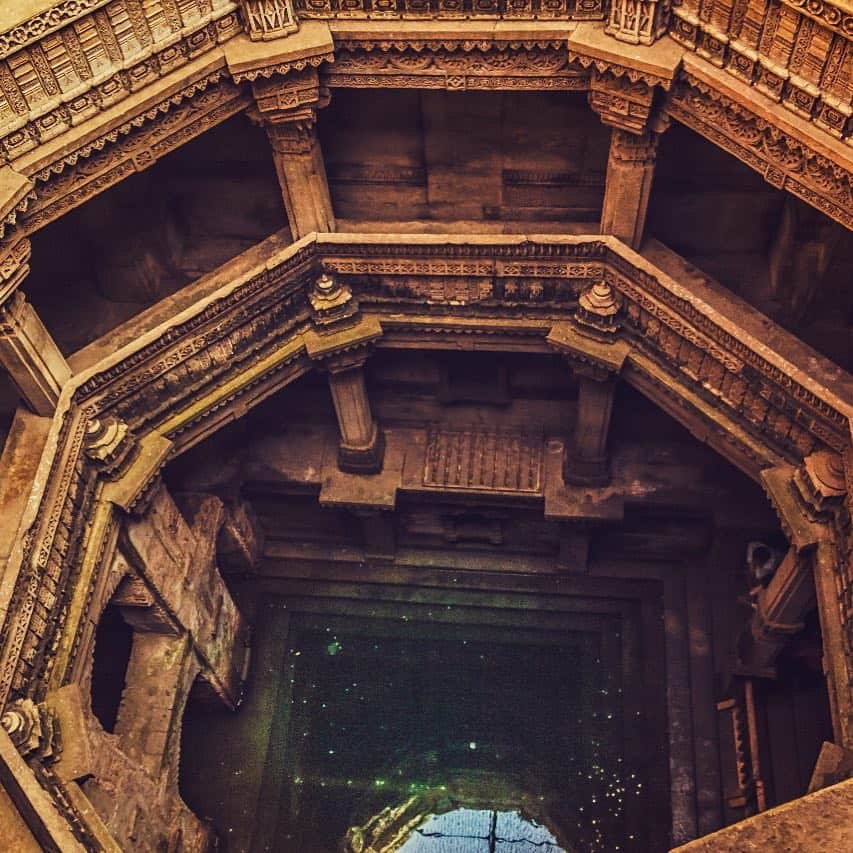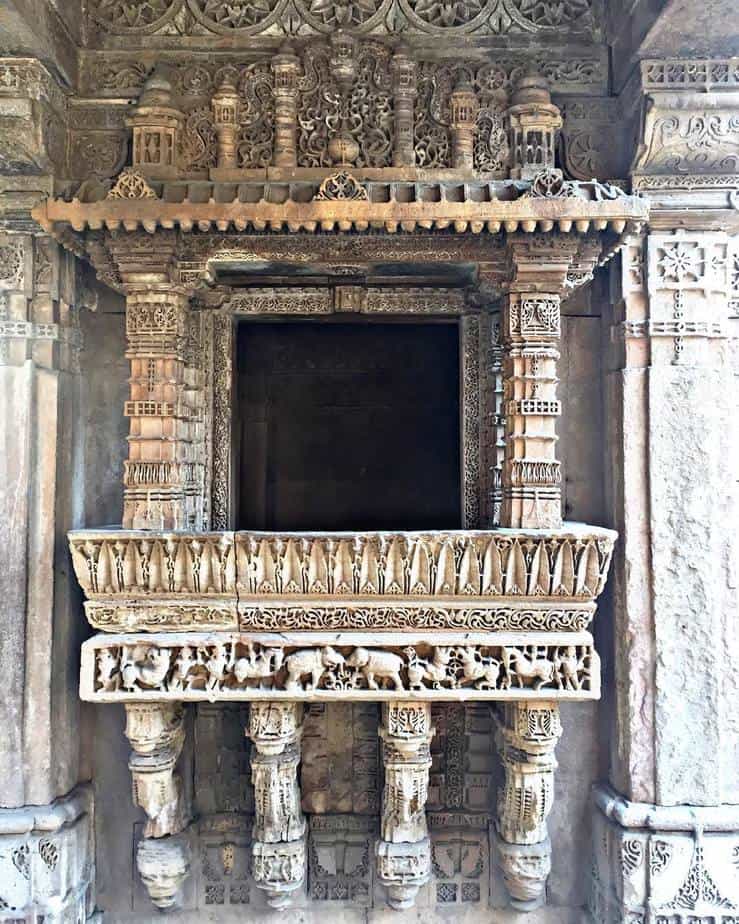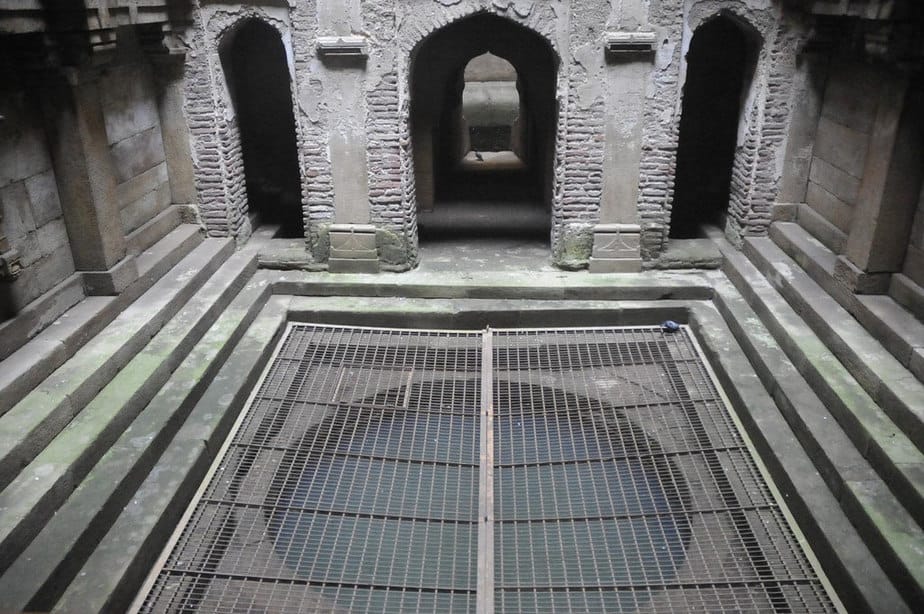Adalaj Ni Vav – Information about Adalaj Stepwell
Table of Contents
One of the most popular heritage of Ahmedabad is ‘Adalaj Ni Vav’. The word Vav is a Gujarati term for stepwell. Nowadays Adalaj stepwell is widely popular for photo walks. Not only among the Amdavadis but this beautiful heritage of Ahmedabad has attracted foreign tourists too. The five stories deep were built in the 14th century by Rana Veer Singh for a social purpose. It provided drinking water to the people and travellers, the stepwell brought relief to the people living in the dry region who had to walk miles for water.
More than 400 years old Adalaj Stepwell showcases how skilled our ancient artisans and sculptors were. Adalaj ni Vav is an example of immense beauty, the more than 400-year-old 15th-century sculpturing. But building this Vav was not easy, the construction of Adalaj ki Vav depicts the story of love, sacrifice and war. With Ahmedabad getting the tag of India’s first World Heritage City by UNESCO the prosperity of Adalaj ni Vav has been manifold.
One of the most popular heritages of Ahmedabad is ‘Adalaj Ni Vav’, which is a stepwell. The term “Vav” in Gujarati refers to a stepwell. In recent times, Adalaj Stepwell has gained immense popularity for photo walks, not only among the residents of Ahmedabad but also among foreign tourists. This beautiful heritage site was built in the 14th century by Rana Veer Singh with a social purpose in mind. It served as a source of drinking water for the people and travellers, providing much-needed relief to those living in the arid region who had to travel long distances to fetch water.
Adalaj Stepwell, which is over 400 years old, showcases the exceptional skills of our ancient artisans and sculptors. It stands as a testament to the immense beauty and intricate sculpturing of the 15th century. However, the construction of Adalaj ki Vav was not an easy feat. It depicts a story of love, sacrifice, and war.
With Ahmedabad being recognized as India’s first World Heritage City by UNESCO, the prosperity of Adalaj ni Vav has multiplied. This prestigious designation has brought even more attention and appreciation to this architectural marvel, attracting an increasing number of visitors from around the world. Adalaj ni Vav stands as a symbol of Ahmedabad’s rich cultural heritage and continues to captivate the hearts of all who visit.

The Story of Adalaj ni Vav – History of Adalaj Stepwell
Adalaj ni Vav which holds a part in making Ahmedabad a heritage city. This well was constructed in 1499 under the supervision of Rana Veer Singh. The purpose of building this magnificent well was to provide ease to the people of his kingdom from water shortage in the dry region. Before the construction could be finished, Rana Veer Singh was attacked by Mohammed Begda, the Muslim ruler of a neighbouring kingdom. The king was killed his territory was occupied by Begada. Rana Veer Singh’s widow, a beautiful lady known as Rani Roopba (or Roodabai), wished to perform Sati but she vowed to complete what her husband had started. Begada who was enchanted with the beauty of Rani Roopa proposed to her for marriage. She agreed to a marriage proposal on the condition that he would first complete the building of the stepwell.
Adalaj ni Vav, a remarkable stepwell located in Ahmedabad, plays a significant role in the heritage of the city. This architectural marvel was constructed back in 1499 under the watchful supervision of Rana Veer Singh, a noble ruler of the region. The purpose behind the creation of this grand well was to alleviate the water scarcity issues faced by the inhabitants of his kingdom, particularly in the arid surroundings.
However, tragedy struck before the completion of the project when Rana Veer Singh was viciously attacked by Mohammed Begda, the Muslim ruler of a neighbouring kingdom. This brutal onslaught led to the untimely demise of the king, and Begda seized control over his territory.
Amidst this chaos, Rana Veer Singh’s grieving widow, the resplendent Rani Roopba, contemplated performing Sati, a self-sacrificial act of joining her husband in death. However, she made a solemn vow to herself to fulfil her husband’s vision and complete the construction of the stepwell before embarking on her final journey.
Begda, captivated by Rani Roopa’s unparalleled beauty, approached her with a proposal of marriage. Intrigued yet determined, the courageous widow agreed to the marriage proposal, but with a condition – Begda must prioritize the completion of the stepwell before their union could take place.
Driven by both his infatuation with Rani Roopa and the desire to honour her late husband’s legacy, Begda wholeheartedly accepted her terms. He recognized the significance of the stepwell not only as a symbol of love but also as a testament to his commitment towards improving the lives of the people in the region.
Thus, with unwavering dedication, Begda fulfilled his promise, overseeing the completion of Adalaj ni Vav. This architectural masterpiece stands tall today, a testament to the love, sacrifice, and determination of Rana Veer Singh, Rani Roopba, and Mohammed Begda.
The tale of Adalaj ni Vav is not only a testament to the historical significance of Ahmedabad but also a celebration of the resilience and devotion of its people. It serves as a reminder of the power of love and the enduring spirit that can transcend even the most challenging circumstances.

The Muslim king was deeply in love with the queen now and so he agreed to the Roodabai’s condition. The stepwell got completed with Begada supervision now and after that, he went to the widowed queen again with the marriage proposal. The queen who had achieved her objective of completing her husband’s vision chose to end her life. She performed praying and ended her life by jumping into the well.
This was the story of Adalj ni Vav with the sacrifice of Roodabai. This magnificent Adalaj ni vav has remained a pride ever since.
The Architecture of Adalaj ni Vav
The construction of Adalaj’s stepwell first begun by Rana Veer Singh and later finished by Bagad Mughal emperor. Due to the provision of two different rulers, Adalaj ni Vav depicts Indo-Islamic architecture. The Adalaj stepwell is five stories deep, The underground platform is square in shape and is quite huge. Its ceiling contains huge openings thus making way for good ventilation for the octagonal well. The octagon shape is clearly seen when you look at top of well while being inside.

The five stories step-well was built during the region of droughts so It was dug deep to access groundwater at that level. The most unique feature of this well is three staircases leads to the bottom water level. You will find lovely oriel windows decorated with minutely carved brackets are at the landing level of the well.

Adalaj exhibits Islamic architecture as well as Hindu architecture. The carvings on the wall have both Islamic motifs of flowers and gods of Hindu it blends the heritage of two religion. There many beautiful carvings on the walls like a woman performing daily chores such as churning of buttermilk, adorning themselves, scenes of the performance of dancers and musicians, and the King overlooking all these activities.

The Queen Rudabai who was responsible for the completion of Adalaj ni Vav is praised in few verses inscribed on the stepwell. We can even see the inscriptions regarding the expense done to build the vav. The overall expense was 5 lakhs to build Adalaj Stepwell during the 15th century.
The Vav stands as a structure of craftsmanship and innovation that one can only ace at.
Location: Adalaj Road, Adalaj, Gujarat 382421
Entry and Timings:
Adalaj ni Vav can be visited anytime between 6 am till 6 pm and there is no entry fees for visiting the stepwell.

The environment inside the well is very pleasant and soothing. The temperature is said five degrees lower than the outside hot temperatures. Due to which it was a perfect resting place in ancient times. it encouraged the women who came to fetch water to spend more time in the cool climes here. People who came in to fill water or to quench their thirst would eventually interact and socialize and sometimes even do the trade. So you 21st-century people have no reason to boast about the advent of social networking – the wise Yodas of the past have already done that.
The magnificent light play of architecture makes it the best place for photography. The best time to feel the astonishing interplay of lights is when the sun has risen. Dawn gives you the chance to capture the splendid beauty of the stepwell from under the ground.
Get yourself clicked at the remarkable Adalaj ni vav. Don’t miss the opportunity to visit this stunning architecture and feel the essence of pure and gentle weather there.
Frequently Asked Questions (FAQ’s)
How many floors is stepwell of Adalaj?
The Adalaj Stepwell (Adalaj ni Vav) is five stories deep supported by intricately carved pillars.
Who built Adalaj Stepwell?
The Adalaj Stepwell (Adalaj ni Vav) was built by Mohammed Begada in 1411 to commemorate Queen Rudabai, wife of Veersinh, whom he had fallen in love with.
How far is Adalaj Stepwell from Ahmedabad?
Distance between Ahmedabad to Adalaj Stepwell is 18.9 km that would roughly take 30 to 45 minutes to reach the destination. While from Ahmedabad airport, the Stepwell is only 20 minutes away.
Do you need to book in advance to visit Adalaj Stepwell?
No, you do not require advance booking to visit Adalaj Stepwell.


I will be visiting Ahamadhabad
How far it’s from the city how do I go adalaj village ?